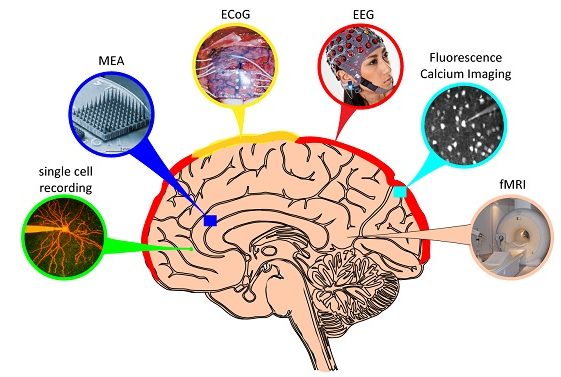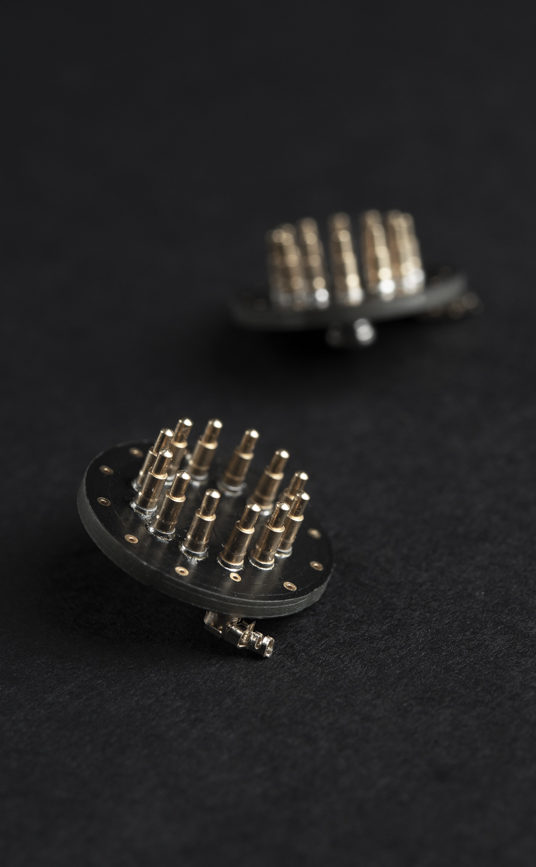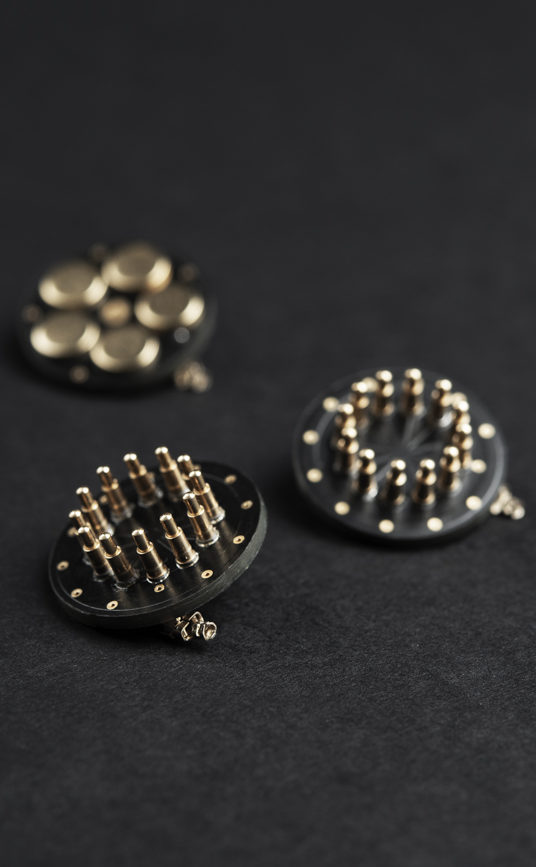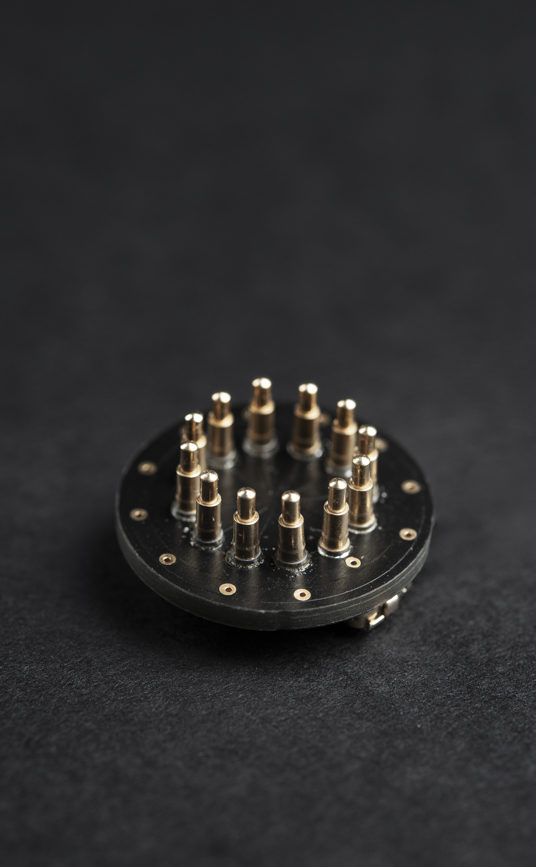The main components of BCI are reading brain activity and translating that activity to commands understandable by computers or other devices.
There are many methods for measuring brain activity. Each method differs in its invasiveness, time, and spatial resolutions. Commonly used techniques to record brain activity are illustrated in the picture below.
From left to right temporal resolution decreases, from <1ms for single-cell and multielectrode array (MEA recordings to around 1s for functional MRI (fMRI)).
The colors indicate the approximate physical scale of the activity that can be recorded with each method and the depth limits of the measurements.
Other activity measurement techniques also exist such as magnetoencephalography (MEG), functional near-infrared spectroscopy (fNIRS), and others.




